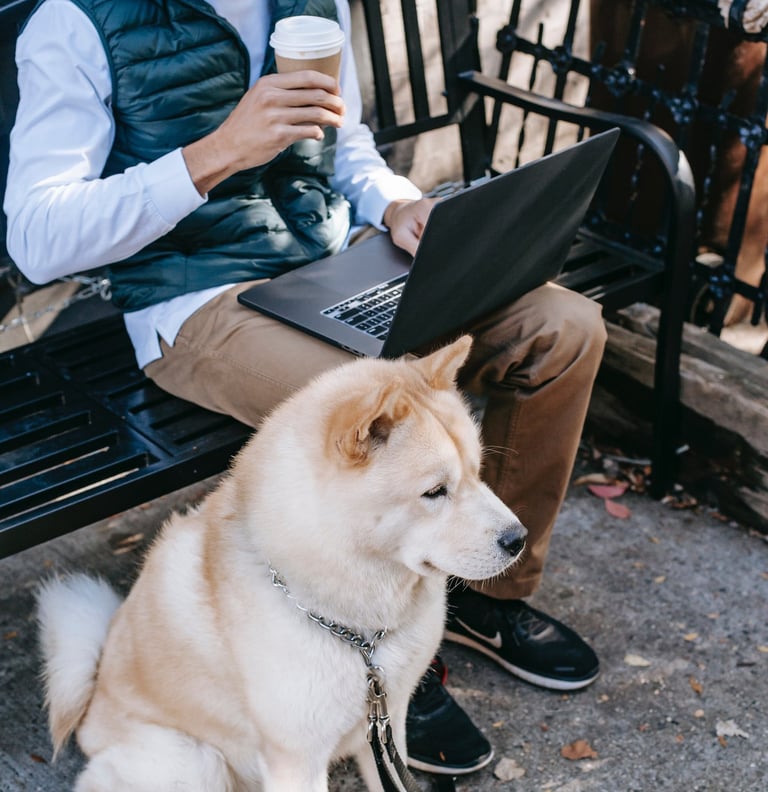Balanced Dog Training: The Proven Method for a Harmonious Canine Companion!
Unlock your dog's full potential with balanced training! Discover the secrets of harmonious canine companionship in this comprehensive guide. Learn the power of positive reinforcement and effective corrections for a well-behaved, happy pup. Start your journey today!
Introduction:
We all want the best for our furry companions. We want them to be well-behaved, happy, and to live their lives to the fullest. That's where balanced dog training comes in – a holistic approach that can truly unlock your dog's full potential. As a professional dog trainer with years of experience, I've seen the magic of balanced training in action. In this guide, I'm excited to share how you can use it to create a harmonious relationship with your canine friend.
I. Understanding Balanced Dog Training
You may have heard the term "balanced dog training" tossed around, but what does it really mean? To put it simply, it's a training approach that combines the best of both worlds: positive reinforcement and correction techniques. It's about finding that sweet spot, that balance, in helping your dog become the best version of themselves.
Balancing Act: Positive Reinforcement and CorrectionsImagine trying to teach a child to behave. You'd encourage and reward them when they get it right (positive reinforcement) and correct their bad behavior to clearly communicate to them they did something wrong. The same principles apply to our four-legged friends.
II. The Core Principles of Balanced Dog Training
Now that we've laid the foundation, let's dive into the core principles that guide balanced dog training.
Positive Reinforcement: The Treats and CheersPositive reinforcement is like the currency of dog training. It involves rewarding good behavior with treats, praise, and affection. When your dog sits when told or refrains from chewing your favorite pair of shoes, a treat and praise can work wonders.
Corrections and Discipline: Setting Boundaries
On the flip side, corrections and discipline play a vital role in reinforcing behavior. It's not about punishment; it's about creating clear boundaries. Think of it as a speeding ticket, you know what the speed limit is but decided not to break the law resulting in the ticket to encourage you to follow the rules of the road.
III. Assessing Your Dog's Needs
Every dog is unique, just like people. Before diving into training, take some time to assess your dog's personality, needs, and behavior quirks.
Know Your Pup: The Canine Personality AssessmentTemperament: Attitude towards life.
Sharpness: Tendency to react aggressively towards stimuli.
Courage: Genetic resilience to uncomfortable situations. An absence of fear.
Confidence: Socialization and conditioning to environmental situations that leads to an acceptance of safety.
Possessiveness: The desire to take and keep resources for themselves. (toy or food)
Hardness: The resiliency to unpleasant experiences.
Softness: The lack of resiliency to unpleasant experiences.
Trainability: The willingness to learn with ease.
Tailoring the Approach
Remember, there's no one-size-fits-all in dog training. Whether you have a rambunctious puppy or a timid rescue dog, the approach must be tailored to your dog's individual needs.
IV. Tools and Equipment for Balanced Training
Balanced training involves using various tools and equipment to communicate effectively with your dog.
Leashes and Collars: Your ConnectionJust like a lifeline, a good leash and proper collar are crucial. A simple training collar can help you maintain control without causing discomfort to your furry friend.
Treats and Rewards: The Paycheck
Treats are like currency in the dog world. Find what motivates your dog – whether it's a tasty treat, a favorite toy, belly rubs, or your tone of voice.
V. The Power of Proper Tones of Voice
While the techniques and tools of balanced dog training are essential, your tone of voice is an often underestimated yet incredibly powerful tool in your training toolbox.
Praise: The Higher, Happy ToneDogs are incredibly perceptive when it comes to the tone of your voice. When praising your pup for a job well done, use a higher-pitched, joyful tone. It's like telling them they're the best dog in the world. Your enthusiasm and positivity will reinforce their good behavior.
Correction: The Deeper, Growly Tone
When it's time for a correction, your tone should shift to a deeper, firmer voice. This communicates to your dog that their behavior is unacceptable without resorting to fear or intimidation. It's like telling them, "I mean business."
Command: The Short, Sharp Tone
For commands, keep your tone short, sharp, and to the point. This clarity helps your dog understand exactly what you want from them. It's like giving them a clear, one-word instruction.
Alert: The Suspicious, Whispering Tone
When you want your dog to be alert or cautious, use a suspicious, almost whispering tone. This can be handy during hikes or when encountering potentially risky situations. Your dog will pick up on your alertness and respond accordingly.
Benefits of Proper Tones of Voice:
Using the right tone of voice in each situation has several benefits:
Clear Communication: Dogs thrive on consistency and clarity. Proper tones of voice help them understand your expectations better.
Incorporating proper tones of voice into your balanced training approach adds an extra layer of understanding and connection between you and your canine companion. It's like speaking their language.
VI. Starting the Balanced Training Journey
Ready to embark on this exciting journey with your pup? Let's get started.
Setting Clear Goals And Realistic Expectations: The Roadmap to SuccessLike planning a cross-country road trip, setting clear goals is your roadmap to success. Determine what behaviors you want to improve and work on them one step at a time.
Be reasonable with what you expect from your dog. For example if your dog is just learning to sit you can't expect them to sit for a long period of time without understanding the stay.
Building a Strong Bond: Trust is Key
Your dog isn't just your pet; they're family. Spend quality time together, and build a strong bond based on trust and respect.
VII. Positive Reinforcement Techniques
Positive reinforcement is a cornerstone of balanced dog training. Let's explore some techniques to make your dog shine.
Clicker Training: The Magical SoundImagine this: I once trained a dog named Bella who loved learning new tricks. The sound of the clicker became music to her ears. Clicker training is a powerful way to mark desired behaviors instantly.
Treat-Based Rewards: Yummy Motivation
Most dogs love a tasty treat. Use their favorite snacks as motivation for good behavior.
Praise and Affection: A Pat on the Back
Don't underestimate the power of praise and affection. Dogs thrive on your love and approval.
VIII. Why Some Traditional Methods Don't Work
We've all heard of time-outs, spray bottles, and shaker cans as methods for correcting behavior. However, here's why they might not be as effective as balanced training.
Time Outs: A DisconnectTraditional time-outs, where you isolate your dog as punishment, might not always work. Dogs may not immediately understand the reason for their "timeout."
Spray Bottles: Fear and Anxiety
Using spray bottles can create fear and anxiety in your dog, which can harm your relationship. We want them to trust us, not fear us.
Shaker Cans: Temporary Fixes
Shaker cans may momentarily stop unwanted behavior, but they don't address the root cause. Balanced training aims to teach your dog appropriate alternatives.
IX. Problem-Solving with Balanced Training
Balanced training isn't just about basic commands; it's about addressing common behavioral issues.
Aggression, Separation Anxiety, Barking: Balanced SolutionsI've worked with dogs exhibiting various issues, from aggression to separation anxiety. Balanced training can offer tailored solutions to help your dog overcome these challenges.
Consistency is Key
Consistency is vital in any training regimen. Stick to the plan, and you'll see progress.
X. Progress Tracking and Adjustments
As you embark on this journey, don't forget to track your dog's progress and make necessary adjustments.
Tracking Progress: Celebrate MilestonesCelebrate small victories along the way. It keeps both you and your dog motivated.
Making Adjustments: Adapt and Thrive
Your dog is unique, and their needs may change. Be prepared to adapt your training plan as necessary.
XI. Maintaining a Balanced Lifestyle
Balanced training isn't just about a one-time effort; it's a lifestyle.
Ongoing Training and Reinforcement: A Lifetime CommitmentThink of balanced training as a lifelong commitment. Continue to reinforce good behavior and keep learning together.
Conclusion:
In your journey to unlock your dog's full potential with balanced training, remember that patience, timing, and clear communication are your best friends. By understanding your dog's unique needs and using a balanced approach, you can build a bond that will last a lifetime. So, let's get started, and watch your dog shine like never before.
Additional Resources:
For more in-depth guidance on balanced dog training, contact Top Priority Pet at jabk9.com for personalized training programs that fit your dog's needs.
Remember, the path to unlocking your dog's full potential is an exciting one, filled with love, learning, and a whole lot of tail-wagging fun!


